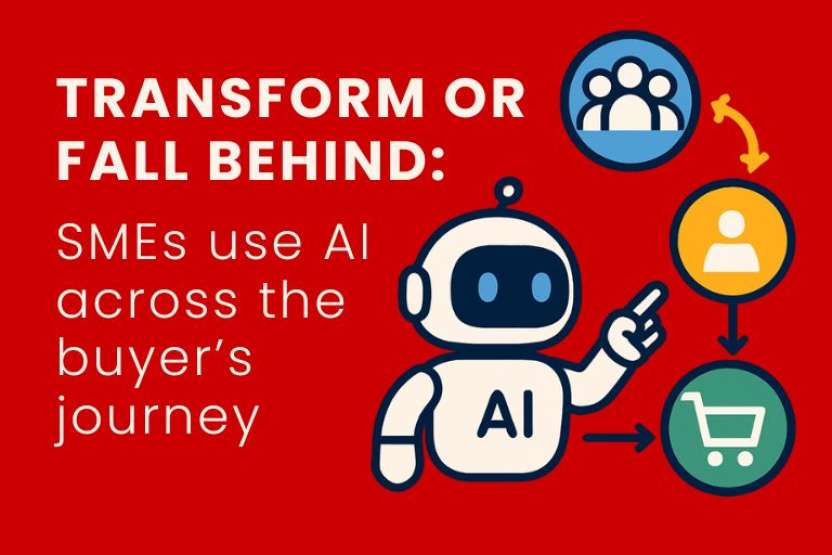Repurposing marketing content?
- A compelling case for repurposing your marketing content.
- Repurposing your Whitepapers, eGuides, Blogs and Website content?
- Can marketing automation and digital marketing tools help you repurpose content?
- Should you syndicate your content across online marketing channels?
- Should bottom-of-the-funnel assets, such as client case studies, be reused as top-of-the-funnel content, such as referral marketing?
A compelling case for repurposing your marketing content.
Businesses will spend typically between 5% and 15% of revenue on marketing. The latest CMO survey showed 9.8% of revenue for the average marketing spend, with B2C service companies devoting 15.6% of revenue to marketing, and B2B product companies spending 8.6% of revenue. A Gartner CMO survey shows similar numbers, with marketing expense budgets of 10.5% of company revenue.
Content marketing often represents a significant proportion of this marketing spend. Research by B2B Content Marketing indicates that the average spend on content is 26%. According to Salesforce.com research 13% is spent on content in B2B and 19% in B2C:
So, with somewhere between 13% and 26% of budgets being spent on content, it is important to ensure what is created is ‘worked’ and leveraged across different marketing activities, being appropriately reused to get the most from all content created.
If you are to maximise the return from your investment in marketing content every piece of content needs to be carefully considered. What are its objectives, how will its success be measured and how will it be used, including how it will be repurposed, to ensure it returns on the cost to create?

Take a zero-based marketing approach where every item that has money spent on it must give a positive return on that investment.
Repurposing your Whitepapers, eGuides, Blogs and Website content?
Quality high-impact content, Whitepapers, eGuides, Blogs and Websites, are going to take significant effort to create if they are going to deliver results in today’s ever ‘noisy’ and competitive communications environment.
A high-quality eBook or Whitepaper may take many days to research, write, design, review, adjust and publish. 62% of B2B marketers say that eBooks and white papers are the most successful types of content they produce (Source: B2B Content Marketing). A well-written, cross-linked and attractively presented SEO performing blog is likely to exceed 2,000 words and again is going to take some time to create.
If you have any e-guides, whitepapers, or quality blogs, how long did they take to produce and at what cost? Once you published, did they earn their keep and deliver the results you expected? It can be all too common to see relatively costly assets created, published, and then move on to creating the next marketing asset.
When putting significant effort into creating quality content it is important to get the most return from that effort. Primary content, or sections of it, maybe repurposed in many ways; such as input into customer and internal presentations, slide shares, video storyboards, physical letters, newsletters, webinars, podcasts, infographics, and feed multiple social media posts, to name but a few of the possible options.
For example, your 2,000 plus word blog may feed three or four social media posts, be the foundation of your emails, be a section of the content within your eGuide. You may also consider using the words of the blog in different ways, such as creating a visual infographic or animated video.
Your website will present your value propositions, often structured in a ‘problems’ you resolve, your ‘solutions’ to those problems, the ‘value’ of those solutions and the ‘proof’ points (e.g. client references) that support what you say. If you are presenting your value proposition in other environments, such a new client presentation, the slides you use can start with and build on your website content. At the end of the presentation, you may wish to leave or send a follow-up company overview brochure, and this can be created using the relevant areas of your website content.
Your considered content roadmap will support your marketing aims. If you are creating content to support demand generation, you may also wish to consider where most businesses see real value in their content (Source: https://contentmarketinginstitute.com/2019/12/demand-gen-content-research/):
When reflecting on your content consider what your target audience wants to hear, it is likely to be something that adds resolves their problems and adds high value to them today or in the future.
How is your content going to be used to reach your target audience? Many factors influence the selection of the right marketing communication channels that will effectively reach your target audience. See our blog for additional information on selecting the right communication channels.
Can automation and digital marketing tools help you repurpose content?
Personalisation of content can be very productive when supported by technology.
An excellent example is personal and unique PDFs that are created for any company auditing its marketing and growth strategy using our online assessment tool. The online assessment asks 30 easy-to-answer questions to assess a company’s marketing and growth strategies. People who complete the assessment then instantly receive a detailed personalised 20-page report that scores their approach and includes improvement suggestions related to their input.
The whole process is automated, and content is reused and repurposed time and time again but made unique. The process starts by accessing the 30 assessment questions. Each question has three possible answers and the answers to these questions (90 different options) are already detailed within a Google Sheets spreadsheet. When the questions are completed a score is automatically calculated and a personalised 20-page plus PDF report is sent. The whole process is automated.
To check the automated process for yourself the assessment can be assessed here: https://report.epitomise.co.uk/
When writing emails consider how they can be used for future subscribers by including them within triggered email nurture tracks.
If you are consistently posting on social media using posting tools that archive posts can be extremely valuable for storing and rapidly adjusting content to reuse it again in the future. Posting tools will also enable you to rapidly post the same content across multiple social media sites simultaneously.
Should you syndicate your content across online marketing channels?
Writing high-quality marketing content takes time and time is money so is syndicating your content a good or bad idea?
If you write a blog for your website and then also post the same blog on another website, for example as a LinkedIn article or another blog on a third-party website, that is syndicated content.
If you want to ‘work’ your content across as many relevant communication channels as possible and capturing email addresses and if the other site outranks your website organically are not important then syndicating your content is likely to be a good idea.
If you want your content to perform for SEO, then duplicating content across other sites, is likely to be a bad idea unless you are careful and secure the permission of the third-party sites to use canonical tags or NoIndex. Canonical tags tell search engines that you are the original source of the content. NoIndex tell search engines not to index a page. If the third-party sites will not do either of these then ask for a clear attribution and a backlink to your website. Clearly, on LinkedIn, you will not be able to add these to your republished content.
What are the objectives for your content? Do you syndicate your content, and have you seen results? If you are looking for further reading on syndicating content Neil Patel has an interesting blog on his website: https://neilpatel.com/blog/the-step-by-step-guide-to-syndicating-content-without-screwing-up-your-seo/
Should bottom-of-the-funnel assets, such as client case studies, be reused as top-of-the-funnel content, such as referral marketing?
Content that is used at the bottom of the funnel, at the Evaluate and Buy stage of a typical company to customer journey, include such items as client case study videos, written customer references and product demos to name but a few of the possible options. So, should these assets be used at the top of the funnel, as the Discover and Explore phases?
It is interesting how often you will see referral marketing programs taking bottom-of-the-funnel video case studies and using them as top-of-the-funnel assets. When considering a company to customer journey, such as that shown below, new prospects are rarely going to sit and watch a 3-minute video with messaging that is targeted to the Evaluate rather than the Discovery phase of their journey.

It is great to create referral content that supports Discovery, but the messaging and content needs to be created to appropriately align to those discovering your business for the first time. The same typically goes for the other bottom-of-the-funnel content that is to be used at the top-of-the-funnel too.
For additional help on creating marketing content to support achieving business results please don’t hesitate to contact us.
Like this? Share it!
About Epitomise:
We help SME and Technology companies use modern marketing strategies to grow. From strategic advice to tactical execution grow your business with the support of a 'top-100' award-winning marketing leader who is supported by a network of expert marketing specialists. With over 20-years' senior marketing experience and a track record of delivering results, as an attentive expert strategic marketing and services company, we help you grow your brand, leads, sales and customers by doing the right things the right way. Help for as long or as short as you need.







